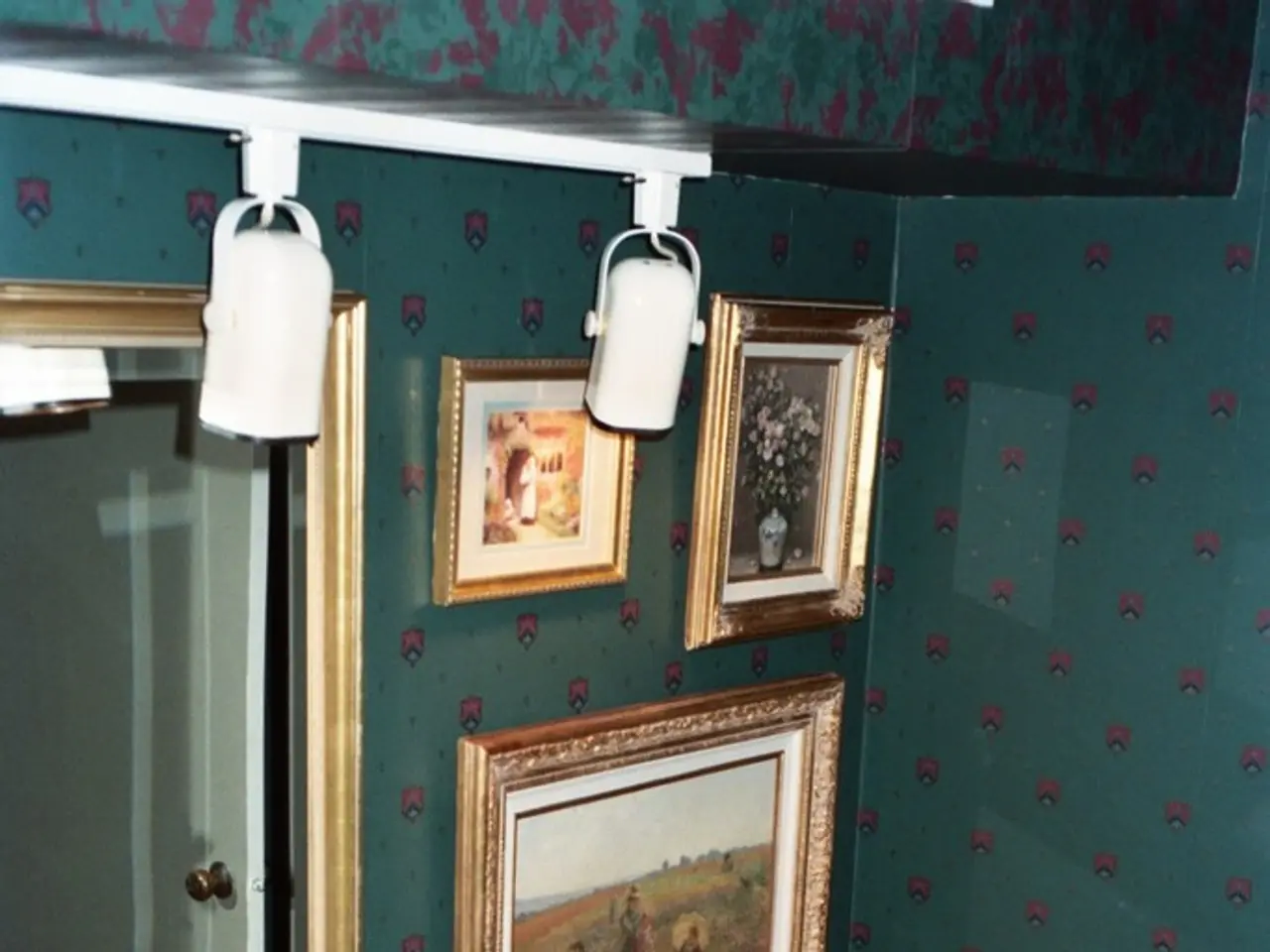Leading the Eco-Friendly Revolution: Innovative Approaches in Bathroom Architecture
================================================================================
In today's world, sustainability is at the forefront of many design decisions. This is particularly true in the realm of bathroom design, where incorporating eco-friendly elements can not only reduce environmental impact but also enhance functionality and aesthetic appeal. Here are some key areas to focus on when implementing sustainable trends in bathroom design.
Use of Natural Elements
Bringing tactile richness and sustainability into the bathroom space is achievable through the use of organic materials such as reclaimed wood vanities, natural stone, bamboo, and cork flooring. These materials are renewable, durable, and often provide unique aesthetics while reducing environmental impact. Additionally, nature-inspired color palettes featuring greens and browns can enhance the eco-conscious feel[1][2][3].
Water-Conserving Fixtures
Installing low-flow toilets, faucets, and showerheads certified by WaterSense or similar standards can significantly reduce water consumption without sacrificing performance. Dual-flush toilets and smart bidet systems further reduce water use and toilet paper waste, contributing both to resource savings and enhanced hygiene. Advanced setups may include greywater recycling systems that reuse water from sinks and showers for toilet flushing, cutting household water use by up to 50%[1][2][3].
Eco-Friendly Materials
Prioritizing recycled and reclaimed materials such as recycled glass tiles, recycled-content ceramic or porcelain tiles, and reclaimed wood countertops is essential. Bamboo and cork are sustainable flooring choices due to rapid renewability and natural antimicrobial properties. Choosing locally sourced stone also reduces transportation emissions and supports local economies[1][2].
Energy-Efficient Lighting
Using LED lighting, which offers superior energy efficiency and longevity compared to traditional bulbs, reduces electricity consumption. Incorporation of natural lighting through larger windows or skylights complements this by minimizing artificial light use during daytime. Smart controls or sensors can further optimize energy usage by adjusting lighting based on occupancy or daylight levels[2][3].
Mindful Accessories
Selecting accessories that align with sustainability goals, such as biodegradable soaps, refillable dispensers, and moisture-absorbing plants that improve air quality naturally, is crucial. Touchless fixtures not only conserve water and enhance hygiene but also reduce waste and energy associated with manual cleaning. Opt for minimalistic, spa-inspired design elements that reduce clutter and promote calm, wellness-focused environments[1][3].
By integrating these strategies, bathroom design can merge functionality, sustainability, and aesthetic appeal to create efficient, eco-conscious spaces that support both environmental goals and user well-being[1][2][3]. One accessory replacement that aligns with sustainability goals can have a big impact, such as recyclable containers for personal care products or biodegradable bath mats.
Embracing sustainable bathroom design trends fosters a deeper connection with the environment. Natural elements in bathroom decor go beyond aesthetics and aim to nurture well-being. For instance, reusable cotton rounds are a sustainable option for skincare routines, while handmade bathroom accessories made from sustainable materials can infuse personality into a space.
The concept of biophilia, designing environments that merge seamlessly with nature, is a current trend in bathroom design. Cascading ferns suspended from the ceiling or a charming herb garden on a windowsill can transform an ordinary space into a personal sanctuary. Tiles crafted from recycled ocean plastics are available and serve as conversation starters and a meaningful step towards addressing ocean pollution.
Smart showerheads track and adjust water usage in real-time, helping to conserve resources. Soap dishes made from bamboo are available as sustainable options. Energy-efficient LED lights can radically alter the mood of a space and yield significant energy savings.
By making deliberate choices, we can create positive change towards a greener future.
- Instead of conventional glass tiles, consider those crafted from recycled ocean plastics to minimize environmental impact and serve as a statement piece.
- Integrate smart showerheads into your bathroom design to track and adjust water usage in real-time, promoting water conservation and efficiency.
- Opt for bamboo soap dishes as a sustainable alternative to traditional plastic options, reducing waste and promoting eco-friendly living.
- To add smart automation to your bathroom, incorporate energy-efficient LED lights with smart controls or sensors that adjust lighting based on occupancy or daylight levels.
- Embracing sustainable lifestyle choices at home and in the garden, such as reusable cotton rounds for skincare and handmade bathroom accessories made from natural materials, can foster a deeper connection with the environment.
- Adopting biophilic design principles in your bathroom, like a window herb garden or cascading ferns, can transform the space into a personal sanctuary, blending seamlessly with nature and promoting well-being.




